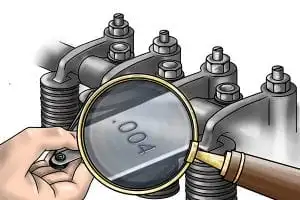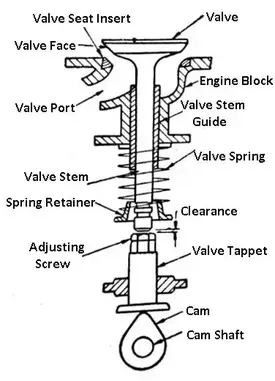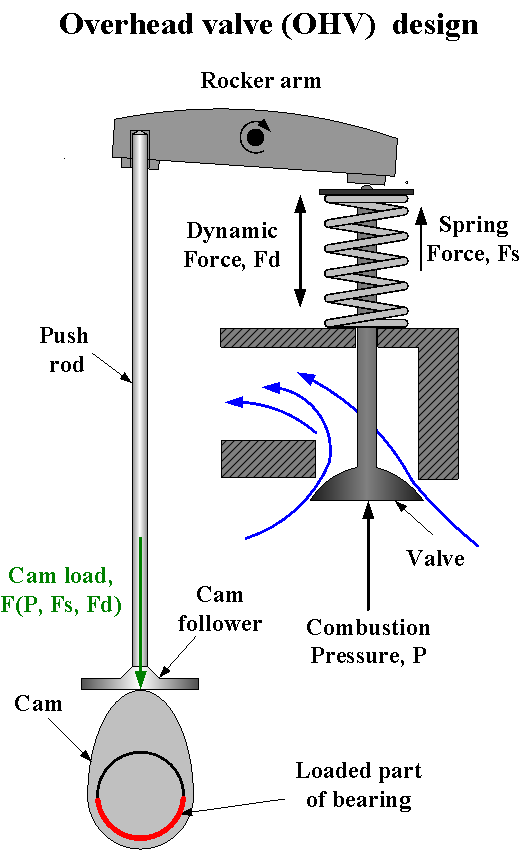Engine valves are the most important component in an automobile vehicle. Valves are the gate used to open and close the gate for the incoming air and the exhausted charge to get out from the cylinder. In this article, I will discuss the details of the Engine valves and Tappet clearance.
Engine Valves and Tappet Clearance
A valve is a device to close and open a passage. In motor vehicle engines. two valves are used for each cylinder an inlet or intake valve and an outlet or exhaust valve. Fuel is admitted to the cylinder by the inlet valve, and the burned gases escape by the exhaust valve.
When closed, the valve must seal the combustion space tightly. The valves are usually made of austenitic stainless steel which is a corrosion and heat-resisting material. The exhaust valve is usually made of silchrome steel which is an alloy of silicon and chromium with unusual resistance to heat. The inlet valve is subjected to less heat and is usually made of nickel-chromium alloy steel.
The valves used in modem passenger car engines are termed poppet or mushroom valves. The head of the valve has an accurately ground face with enough margin left to avoid a thin edge. The angular face is ground on the valve head to make an angle of 45° or 30° to match the angle of the valve seat in the cylinder head.
Spring retainer lock grooves are provided at the end of the valve stem.
Valve Tappet Clearance
A slight clearance is kept between the valve tappet and the valve stem in the case of a straight poppet valve; and between the rocker arm and valve stem in the case of the overhead poppet valve. This is known as valve lappet clearance; and sometimes as valve lash. This clearance allows for the expansion of the valve stem as the engine becomes heated. If sufficient clearance is not given, the valve will not sit properly when the engine becomes heated, which will cause power loss and lifting of the valve.
It is better to have more clearance than necessary rather than to have too little, in spite (of a slight increase in the noise of the valve mechanism. The exhaust valve has clearance more than that having the inlet valve, because the exhaust valve, exposed to the exhaust gases, is subjected to greater heat, while the inlet valve is cooled by the incoming fuel mixture.
The valve tappet clearance is adjusted by an adjusting screw provided on the valve tappet. The length of the tappet can be increased or decreased by turning the screw which ultimately decreases or increases the clearance. In some designs the adjusting screw is self-locking, in others, a locking nut is used to lock the screw at the correct setting. In the non-adjustable type of tappet, the clearance is adjusted by grinding the bottom of the valve stem to increase the clearance or by using a longer valve to increase it. The valve tappet clearance depends upon the following factors :
- Length of the valve stem.
- Material of the valve.
- The temperature at which the engine operates.
Valve Mechanism
The valves are operated by cams mounted on a camshaft. The camshaft gets motion from the crankshaft. As the camshaft turns, the cam operates the valve. According to the location of the valves, the valve mechanism arc of two types :
- Valve mechanism for operating the valve in the engine block (straight poppet valve).
- Valve mechanism for operating the valve in cylinder head (overhead poppet valve).
Straight poppet valve mechanism
It shows the valve mechanism to operate the valve when it is in the engine block (in L-T-and F—head designs). The valve stem slides up and down in the valve stem guide which acts as a slipper bearing. It also prevents the gases from passing from the valve port to the valve chamber of the engine block.
The valve spring is fitted between the engine block and spring retainer, which keeps the valve closed tightly on the valve seat until lifted by the valve tappet by the rotation of the cam, The tappet or lifter is held between the guide which is generally a part of the engine block.
An adjusting screw is provided on the tappet to adjust the clearance between the upper end of the tappet and the bottom of the valve stem. As the cam rotates, it lifts the tappet which lifts the valve to the open position, thus connecting the valve port to the combustion chamber.
Valve seat inserts are listed on the valve seats. These inserts are in the form of rings tapered grounded to suit the valve faces and made of special alloy steels. Usually, they are used only on exhaust valve seats. They reduce wear and can be replaced when worn out.
Overhead poppet valve mechanism
It shows the valve mechanism to operate the valve when it is in the cylinder head (in I-and F-head design). This type of machine requires two additional moving parts— the push rod and the rocker’s arm. As the cam rotates, it lifts the valve- tappet or the lifter which actuates the push rod.
The push rod rotates the rocker arm about a shaft, the rocker-arm shaft, or a ball joint in some designs to cause one end to push down on the valve stem to open the valve, thus connecting the valve port with the combustion chamber.
In this mechanism, the valve tappet clearance is between the rocker arm and the valve stem. It is adjusted utilizing an adjusting screw on the rocker-arm end that contacts the push rod.
Conclusion
The engine valve is the most important component in the automobile engine. Also, the valve tappet clearance is the most important factor to operate safely in the engine. So, all the factors works together to make the efficient engine power.




